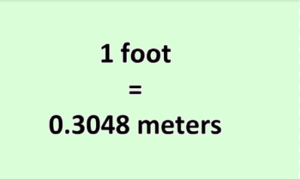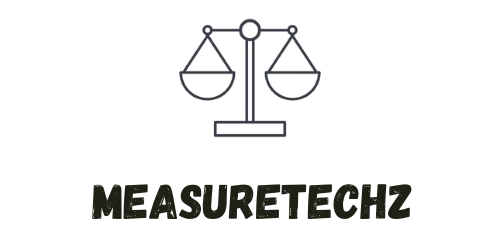Conversions between measurement units can be confusing, especially when switching between the imperial and metric systems. One of the most common conversions people need to make is from feet to meters. Whether you’re working in construction, interior design, travel, or academics, understanding the conversion feet to meters demystified accurately is essential.
This article will walk you through the process of converting feet to meters, explain why the metric system is widely used, and provide practical applications for this conversion. By the end, you’ll have a solid grasp of this essential measurement and how to apply it in everyday situations.
Understanding the Basics: What is a Foot and a Meter?

Before diving into conversions, let’s define these two units:
- Foot (ft): A unit of length in the imperial system, primarily used in the United States, Canada, and the UK. One foot is equivalent to 12 inches.
- Meter (m): The fundamental unit of length in the metric system, widely used globally. It is based on the speed of light in a vacuum, making it a more scientifically precise measurement.
The relationship between these two units is:
- 1 foot = 0.3048 meters
- Conversely, 1 meter = 3.28084 feet
How to Convert Feet to Meters
The Simple Formula
- To convert feet to meters, use this straightforward formula:
Step-by-Step Guide
- Identify the measurement in feet – For example, if you have 10 feet.
- Multiply by 0.3048 – meters.
- Round if necessary – Depending on the level of precision required.
Feet to Meters Conversion Table
| Feet | Meters |
|---|---|
| 1 | 0.3048 |
| 5 | 1.524 |
| 10 | 3.048 |
| 20 | 6.096 |
| 50 | 15.24 |
| 100 | 30.48 |
Why the Metric System?
Global Standardization
Most of the world uses the metric system for consistency in science, engineering, and daily life. Countries like the U.S. still rely on the imperial system, but international trade and collaboration often require metric conversions.
Scientific Accuracy
The metric system is based on logical increments (multiples of ten), making calculations more straightforward and reducing errors.
Practical Applications of Feet-to-Meter Conversion
1. Construction and Architecture
- Builders need accurate conversions when working on international projects.
- MWhy the Metric System?
- Global Standardization
Most of the world uses the metric system for consistency in science, engineering, and daily life. Countries like the U.S. still rely on the imperial system, but international trade and collaboration often require metric conversions.
2. Travel and Aviation
- Many airline altitude measurements use feet, while international flight regulations may specify meters.
3. Fitness and Sports
- Running track lengths and swimming pool distances are commonly measured in meters, while American stadiums use feet.
4. Academic and Scientific Research
- International scientific studies use meters to ensure uniformity.
Common Mistakes to Avoid
- Rounding Too Soon – Always maintain accuracy by rounding only in the final step.
- Mixing Measurement Systems – Stick to one system for consistency.
- Forgetting the Conversion Factor – Use 0.3048 instead of estimating.
Tools for Easy Conversion
- Online Calculators – Many websites offer quick feet-to-meter converters.
- Smartphone Apps – Apps like Google Converter or unit conversion apps simplify the process.
- Calculator with a Memory Function – Store the conversion factor for quick calculations.
Conclusion
Understanding the feet to meter conversion is essential for anyone dealing with measurements in daily life or professional settings. By using the correct formula, avoiding common mistakes, and leveraging conversion tools, you can ensure accuracy and efficiency.
Next time you need to convert feet to meters, remember this simple formula: feet × 0.3048 = meters. Whether you’re measuring a room, booking a flight, or designing a project, mastering this conversion will make your life easier.

